In Allele, your content will be authored as a case, which will be broken down into smaller chunks, the phase. Each phase can be either:
- Initially locked, preventing the learner from accessing the content.
- Initially unlocked, making the content freely available for your students to view, and respond to within the the release and due date.
It’s common to see cases with phases that are sequenced and configured for:
- Fully automated, at-home or asynchronous content.
- In-class or synchronous content where a teacher will manually unlock each phase exactly when needed.
In general, we consider these the asynchronous and synchronous use cases, respectively.
Asynchronous or at-home cases
For cases that are intended to be taken asynchronously, the most common phase sequence includes:
- One (1) unlocked phase at the start, which will unlock the next phase.
- All other phases locked, which will get unlocked in sequence as the learner submits each phase.
As an example, here’s the phase sequence for a case study examining a patient:
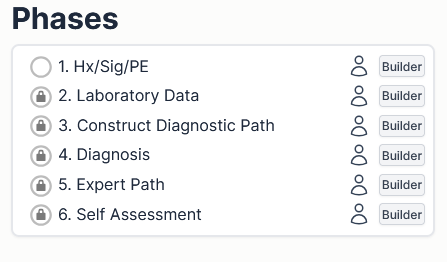
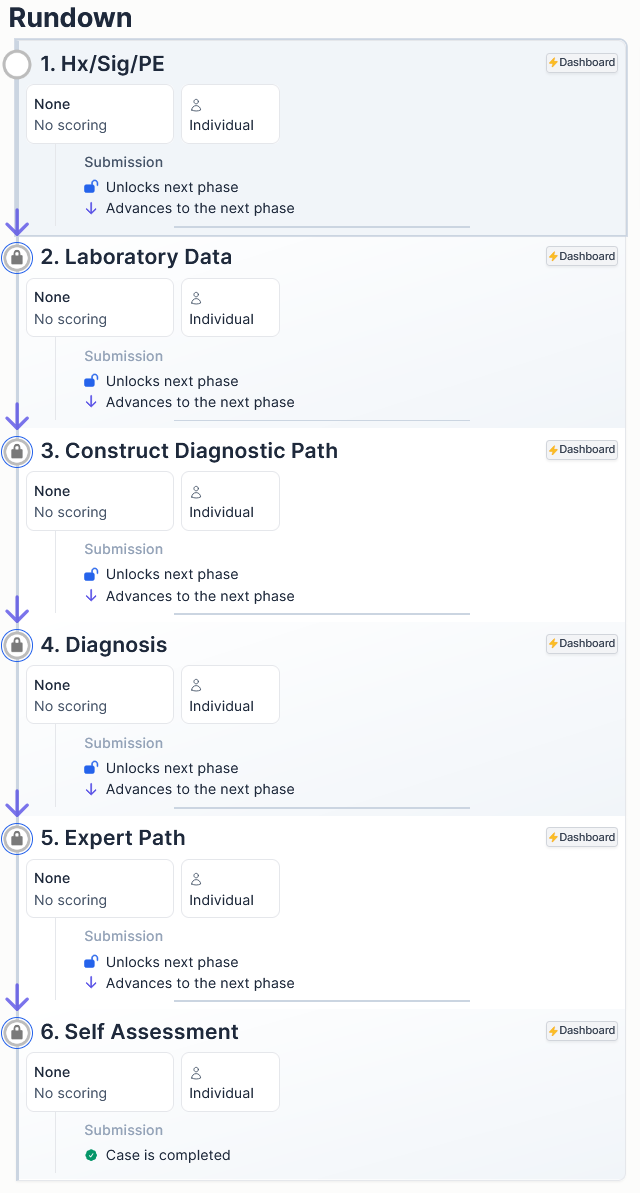
All phases but the first have the following settings:
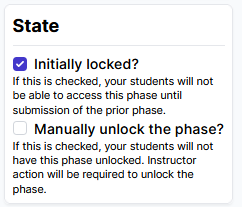
More unlocked phases are fine, too
You can add as many unlocked phases as you want, anywhere in the phase sequence. Your students will be able to access any of those immediately and submitting them will unlock the phase after it. This can be useful if you want to have multiple inlets to your case, so your learner has multiple avenues to work through if they get stuck.
Synchronous or in-person cases
For cases that are intended to by taken in a synchronous environment, like an in-person classroom, it’s common to want to have more granular control over where your students are at in the content and what they can access. A typical phase sequence for scenarios like this may look like:
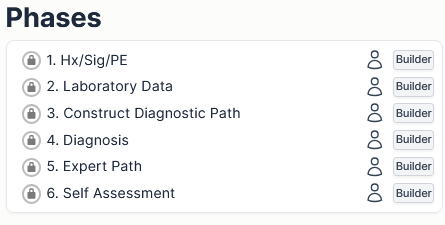
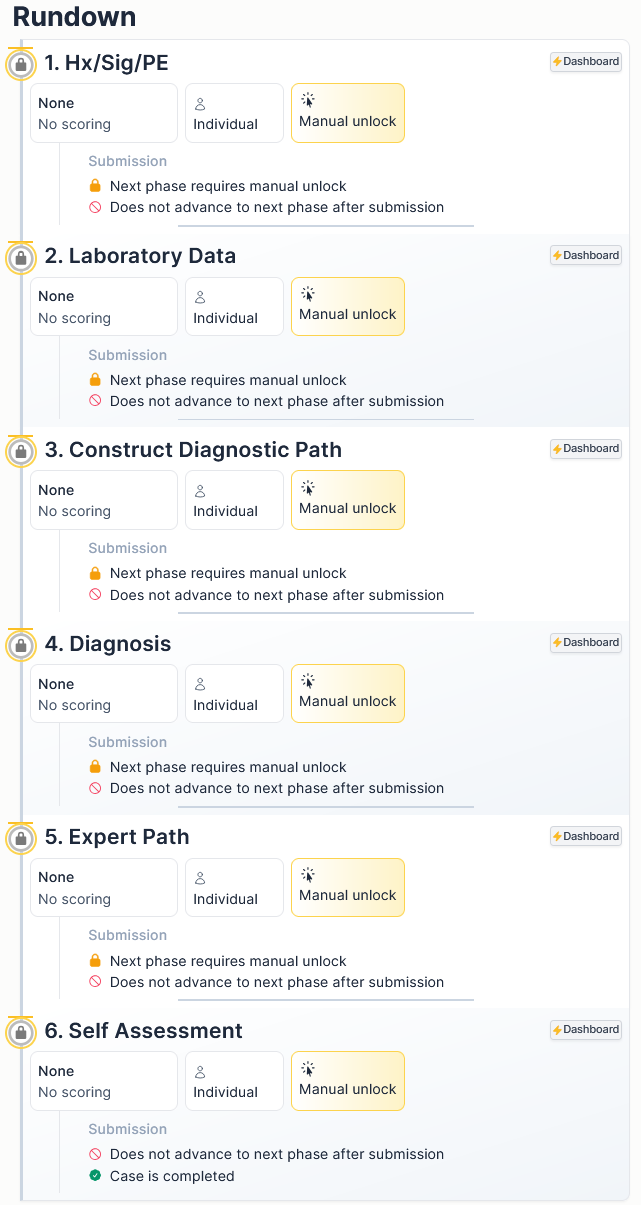
All phases have the following settings:
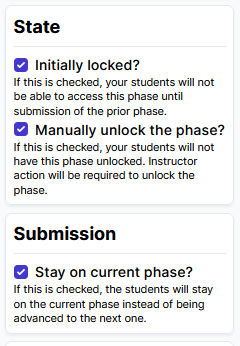
When teaching with a synchronous case like this, you should use the Live dashboard controls “Where to next?” section to control what your learners are working on:
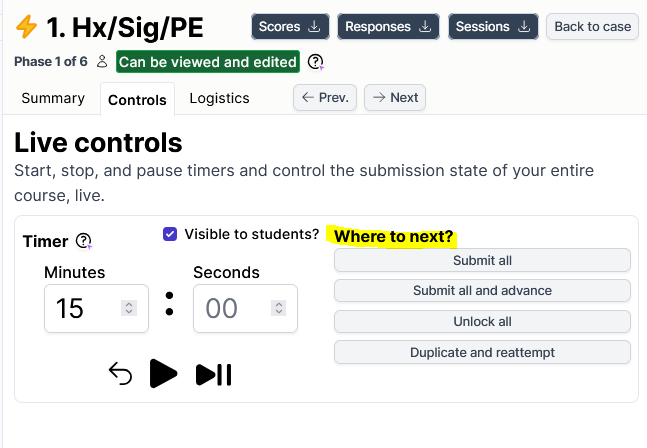
Every option works for all learners working on your content and will unlock, submit, and move them along in real-time. See the related orchestration section in the Key Features of the Live Dashboard documentation.
